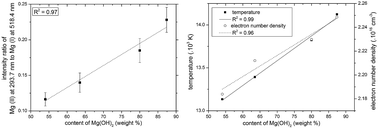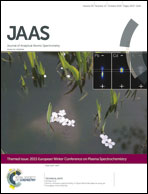Estimating the grade of Mg corrosion using laser-induced breakdown spectroscopy
Abstract
We present a report on the potential use of the Laser-Induced Breakdown Spectroscopy (LIBS) technique for direct investigation of Mg corrosion and related optimization of the table-top LIBS system. Moreover, the preliminary study to prove the capability of this LIBS technique for the estimation of corrosion grade is given. In order to simulate the real corrosive environment, Mg samples were prepared in a constant climate chamber. We show that the corrosive layer on the sample surface significantly affects the properties of laser–matter interactions, i.e. among other parameters causing the matrix effect. Consequently, the properties and persistence of laser-induced plasmas (LIPs) and their composition, generated on such degraded surfaces, essentially differ. Collected radiation of LIP is then analysed and ratios of ionic to atomic Mg spectral lines are correlated with the grade of magnesium corrosion, i.e. content of Mg(OH)2 on the sample surface. The content of Mg(OH)2 is also correlated with plasma temperature as well as with the electron number density of LIP. Additionally, X-ray diffraction (XRD) analysis and optical profilometry were utilized to obtain more comprehensive information about the degradation grade of high purity Mg samples.

- This article is part of the themed collection: 2015 European Winter Conference on Plasma Spectrochemistry, Munster, Germany

 Please wait while we load your content...
Please wait while we load your content...